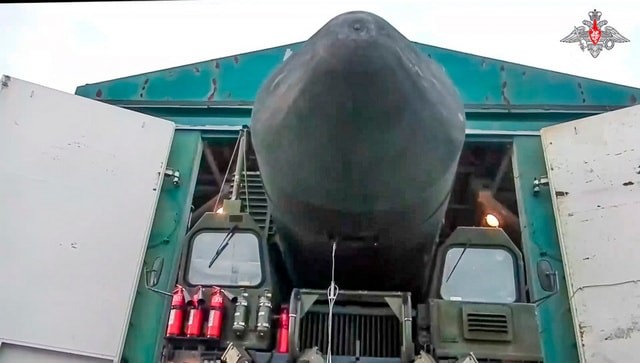Description

Disclaimer: Copyright infringement not intended.
Context
- Russia has begun conducting drills with its Yars intercontinental ballistic missiles.
Highlights
- Russian president has stated his aim to make the Yars system part of Russia’s “invincible weapons” and the mainstay of the ground-based component of its nuclear arsenal.
About the Yar missiles
- Only a few confirmed tactical and technical characteristics of the Yars system are available.
- It was developed by the Moscow Institute of Thermal Engineering.
- The Yars missile is called SS-29 by NATO.
- The missile weighs around 49,000 kg and is 20.9 metres long.
- The missile relies on a guidance upgraded system of the inertial and Glonass system used in the Topol-M missile.
- Its accuracy is around 250 m Circular Error of Probability (CEP).
- The Yars missile has an operational range of 12,000 km.
- Yars can carry a payload of up to a dozen times more than the bomb the Americans dropped on Hiroshima.
- It can be prepared for launch within seven minutes.

History
- An upgraded version of the Topol-M ballistic missile, the RS-24 was first tested in 2007.
- The Yars was inducted by the Russian Strategic Missile Forces in 2010 and production of the missiles began that same year.
- By 2016, the Russian Strategic Missile Forces had 63 mobile and 10 silo-based Yars ICBMs in position alongside the Topol-M systems.
- Unlike the Topol-M, the Yars missile is equipped with Multiple Independently-targetable Reentry Vehicles (MIRVs).
About Ballistic Missiles
- Ballistic missiles are powered initially by a rocket or series of rockets in stages, but then follow an unpowered trajectory that arches upwards before descending to reach its intended target.
- Ballistic missiles can carry either nuclear or conventional warheads.
Classification
- There are four general classifications of ballistic missiles based on their range, or the maximum distance the missile can travel:
Short-range: less than 1,000 kilometers, also known as “tactical” ballistic missiles.
Medium-range: between 1,000 and 3,000 kilometers, also known as “theater” ballistic missiles.
Intermediate-range: between 3,000 and 5,500 kilometers
Long-range: more than 5,500 kilometers, also known as intercontinental or strategic ballistic missiles. Intercontinental ballistic missiles (ICBMs) can fly much further than the minimum range; for example, Russia could hit Chicago with an ICBM launched from the Krasnoyarsk ICBM base, which is located 9,156 kilometers away.
Must Read Articles:
Basics of Missiles: https://www.iasgyan.in/blogs/the-basics-of-missiles
|
PRACTICE QUESTION
Q) How many of the following pairs with reference to ballistic missiles is/are incorrectly matched?
a. Tactical Missiles:: Short Range Missiles.
b. Theatre Missiles:: Long Range Missiles.
c. Strategic Missiles:: Medium Range Missiles.
- Only 1
- Only 2
- Only 3
- None of the above
Answer: Option 2
|

https://economictimes.indiatimes.com/news/defence/russia-starts-exercises-with-yars-intercontinental-ballistic-missiles/articleshow/99077159.cms
















